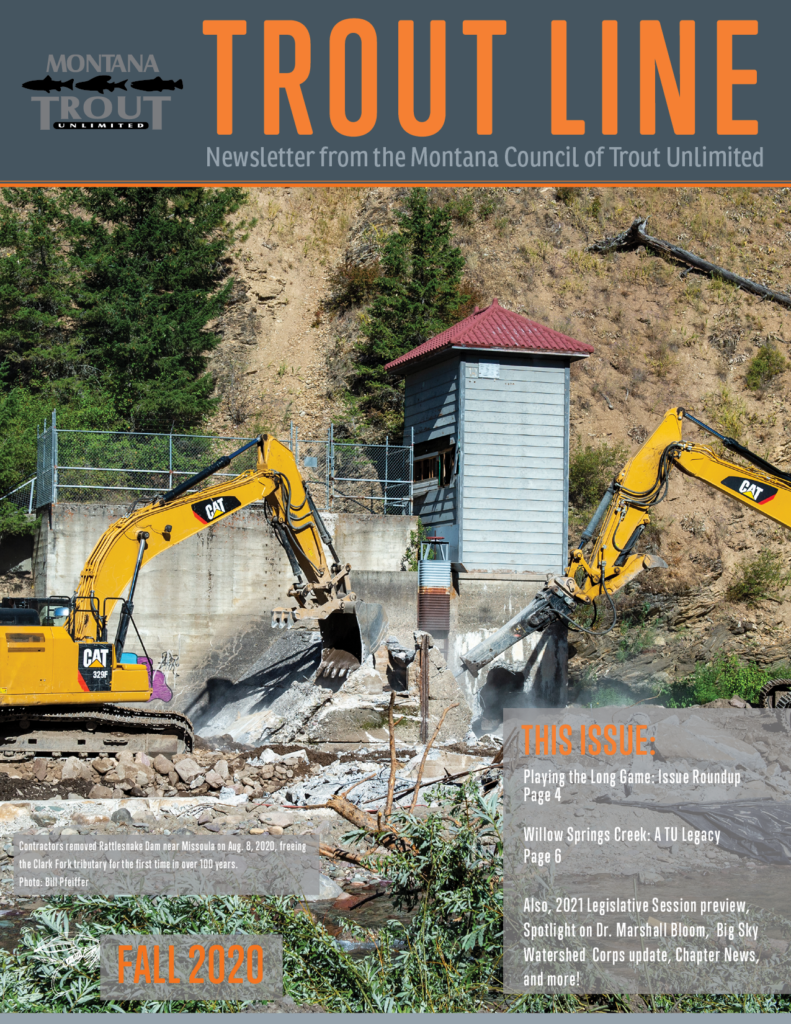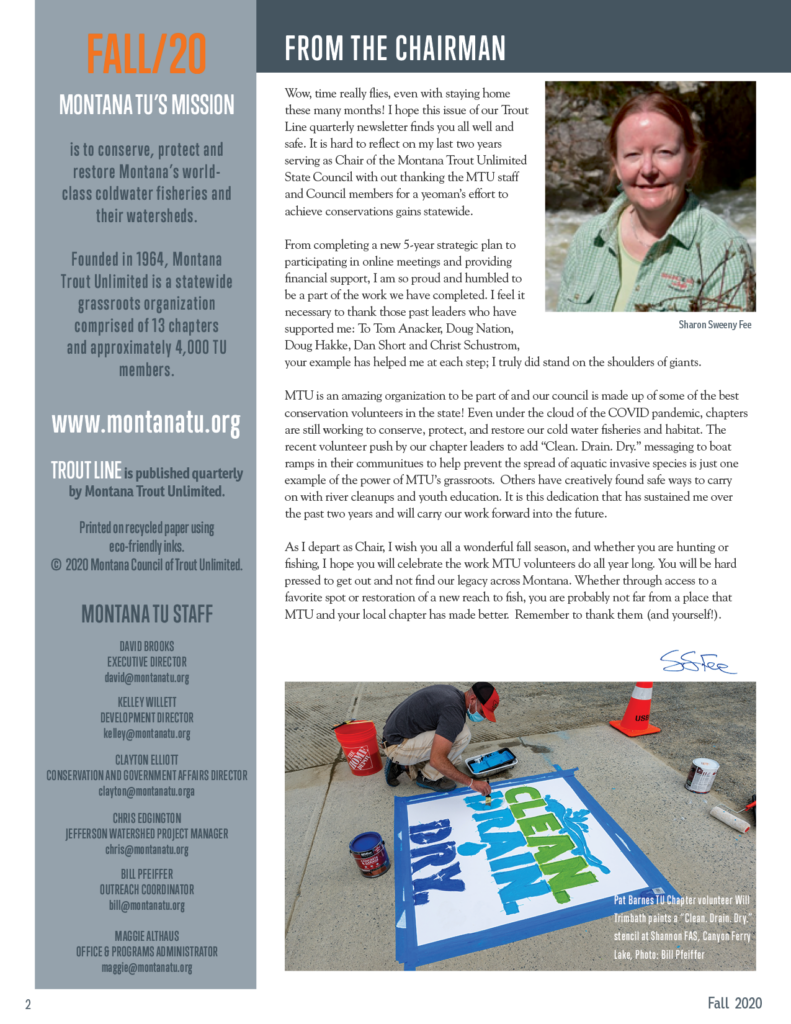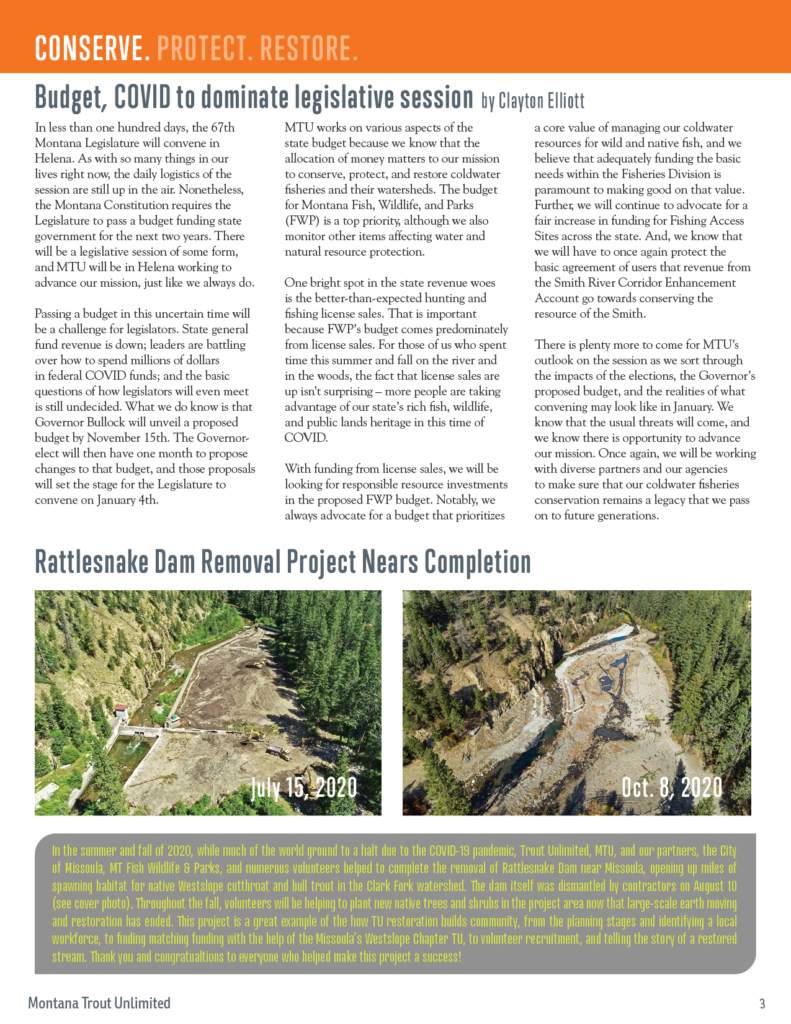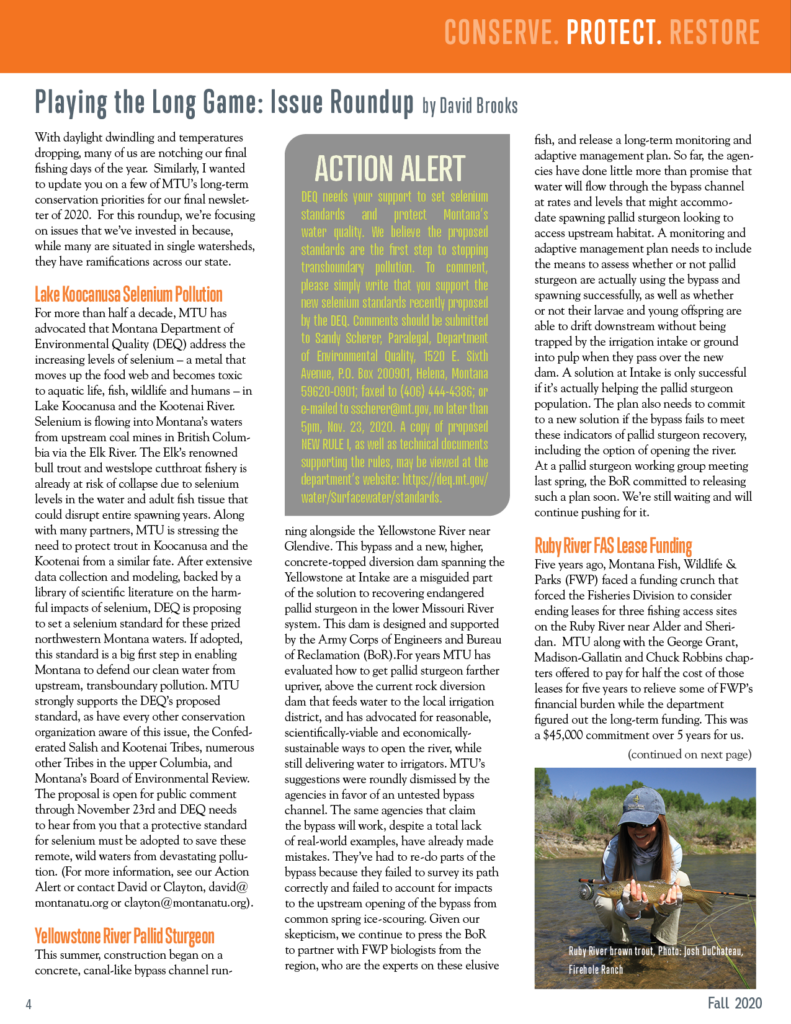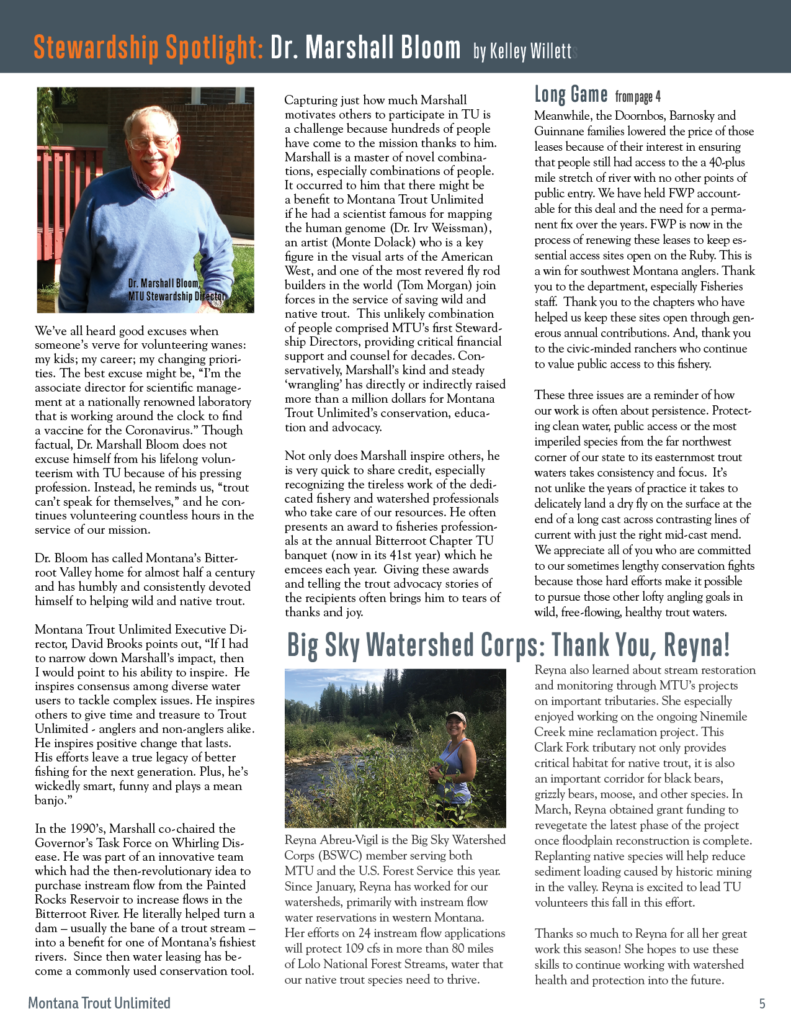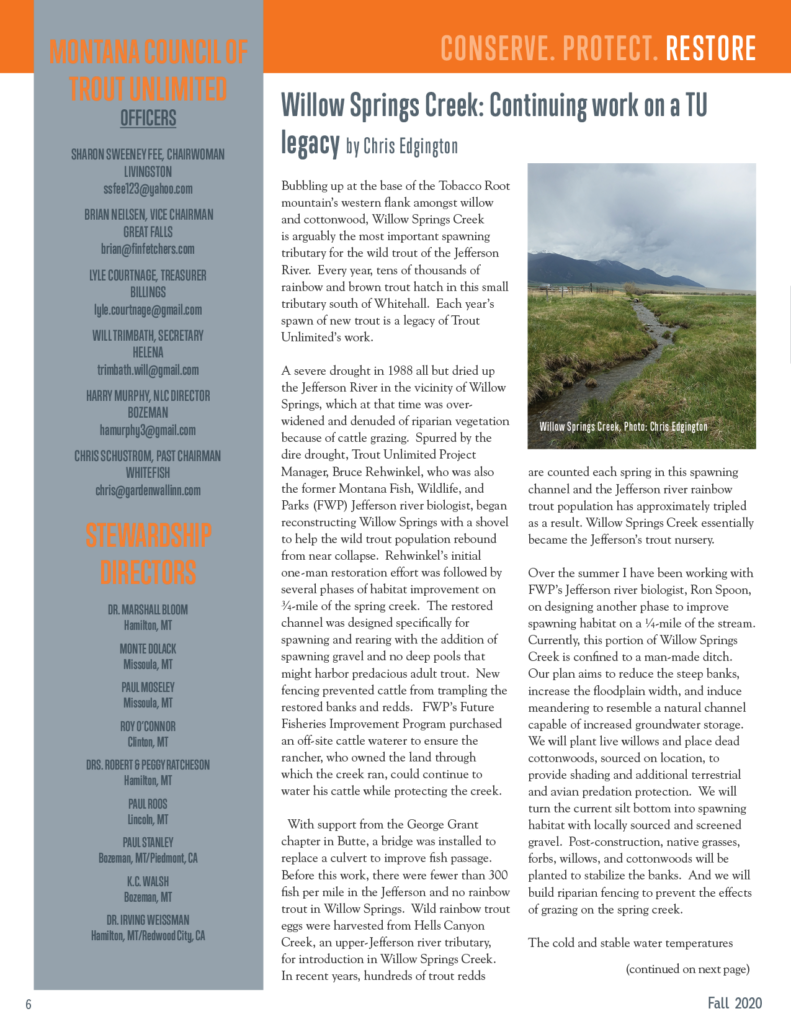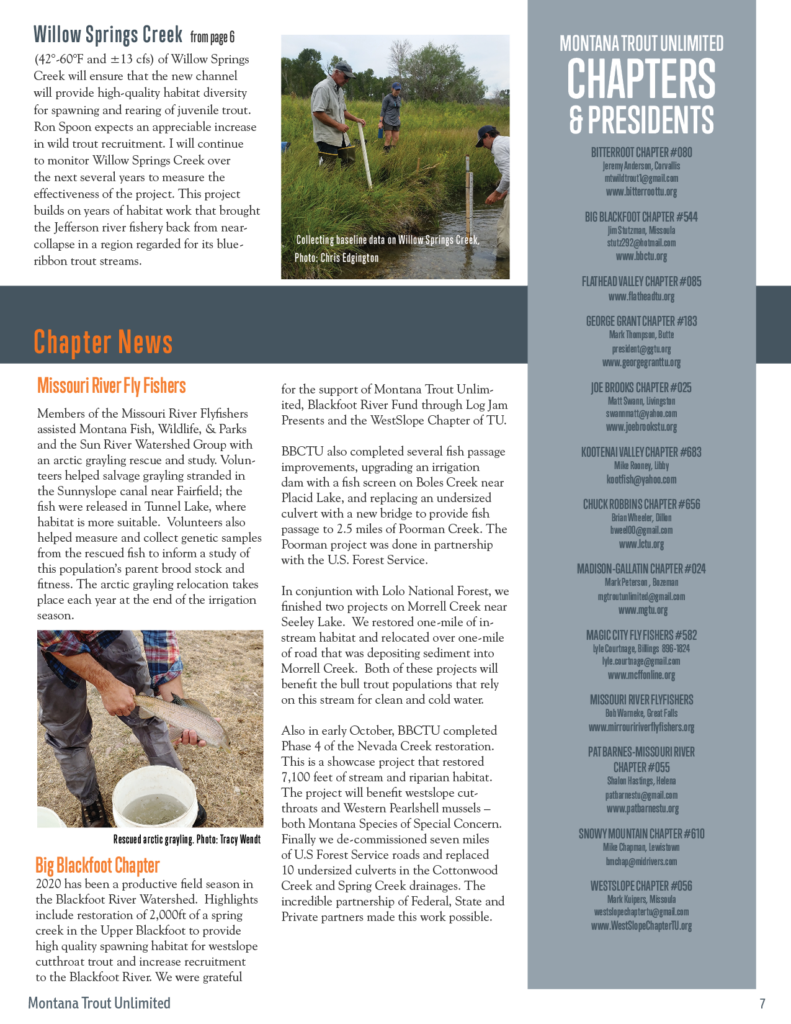Check out the Spring 2021 issue of Trout Line, the official newsletter of the Montana Council of Trout Unlimited! Download a PDF version HERE.
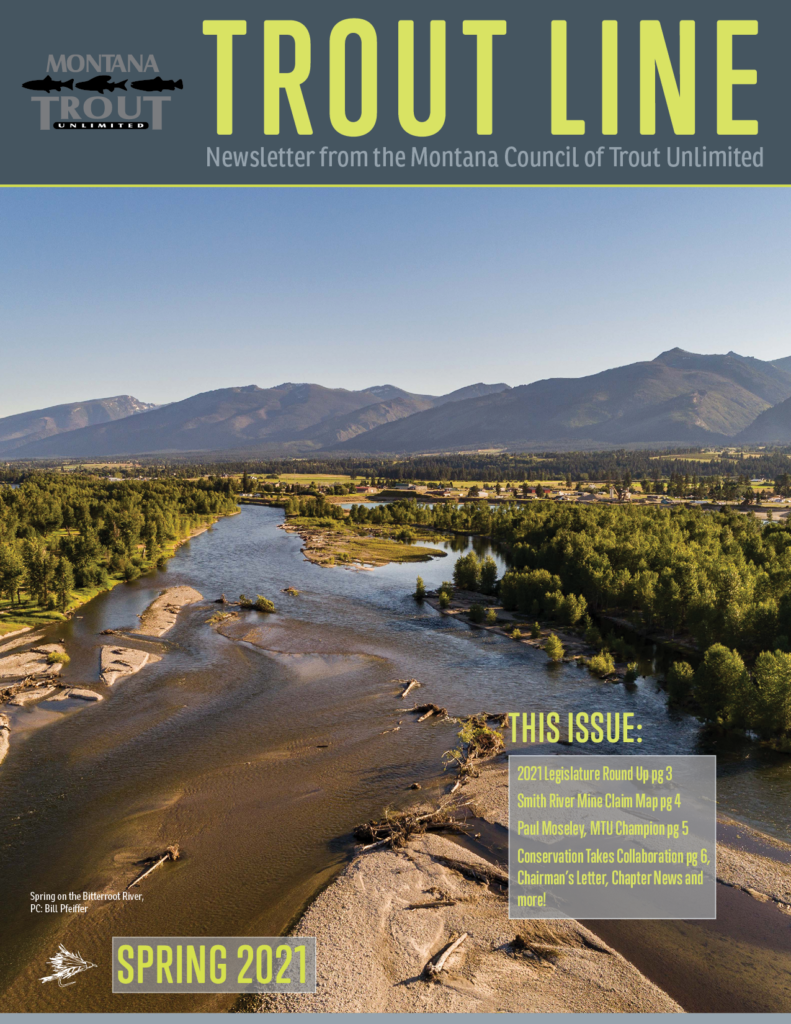
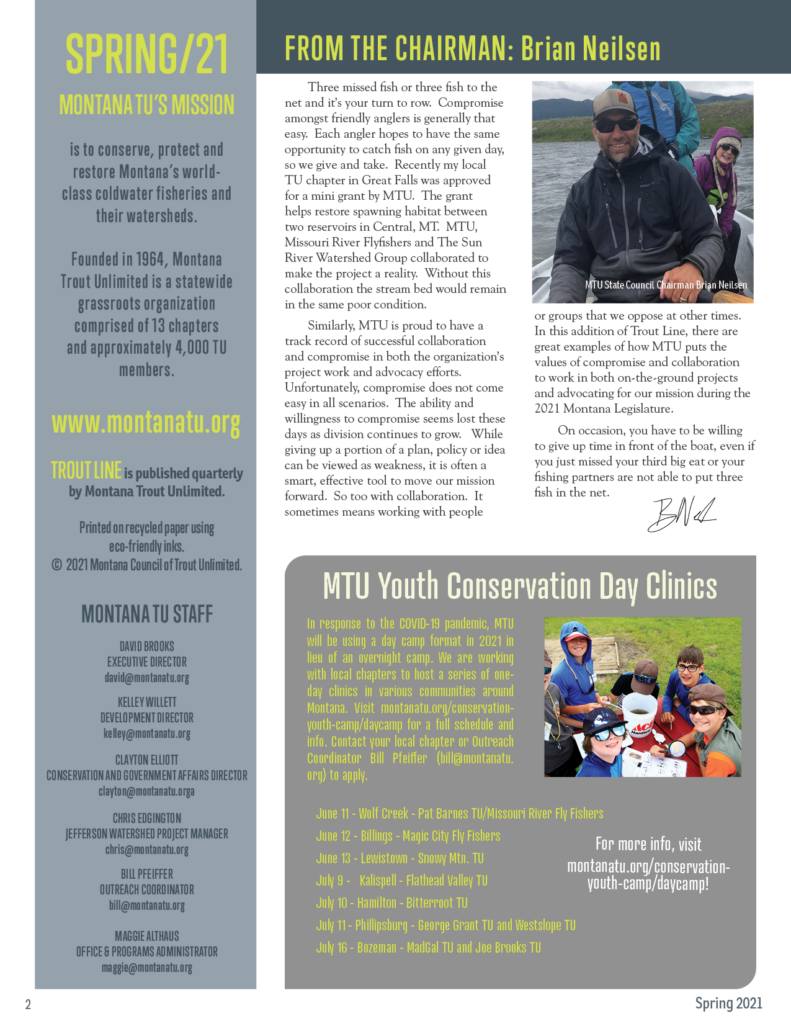
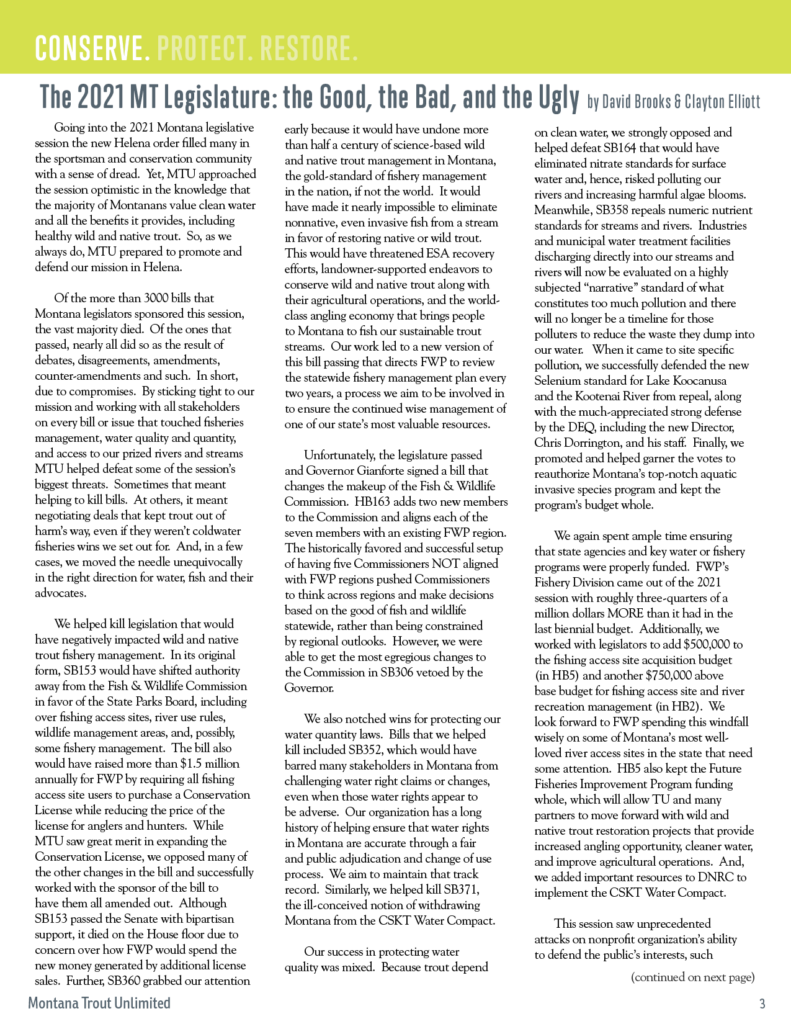
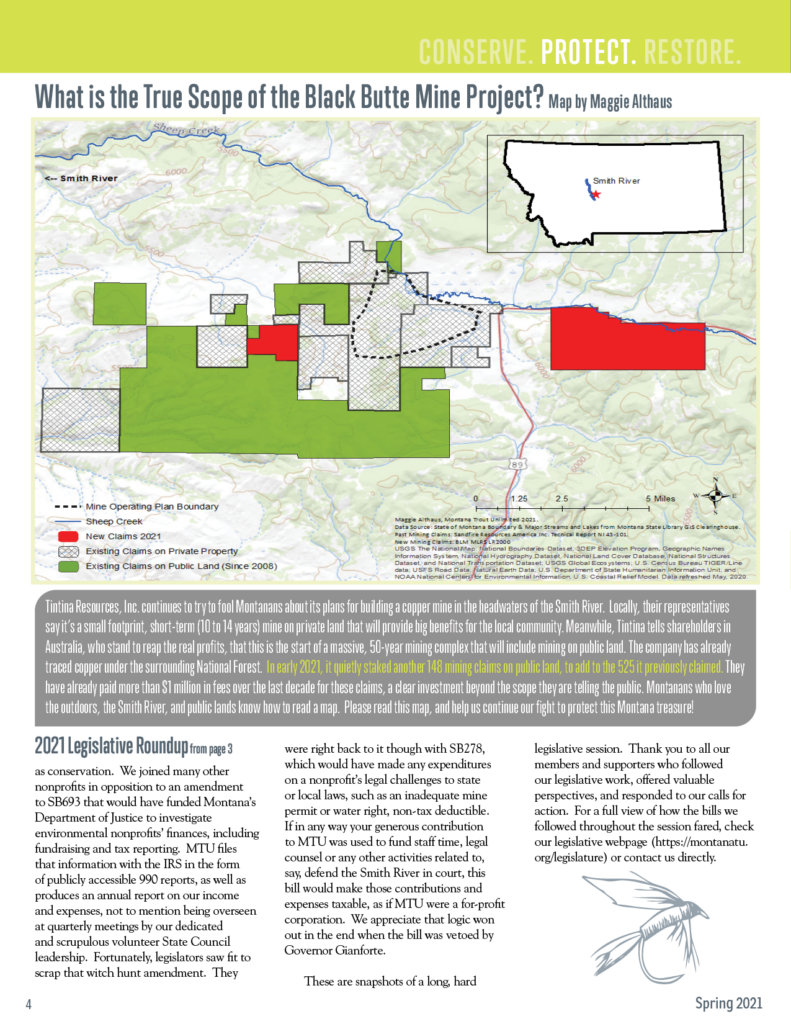
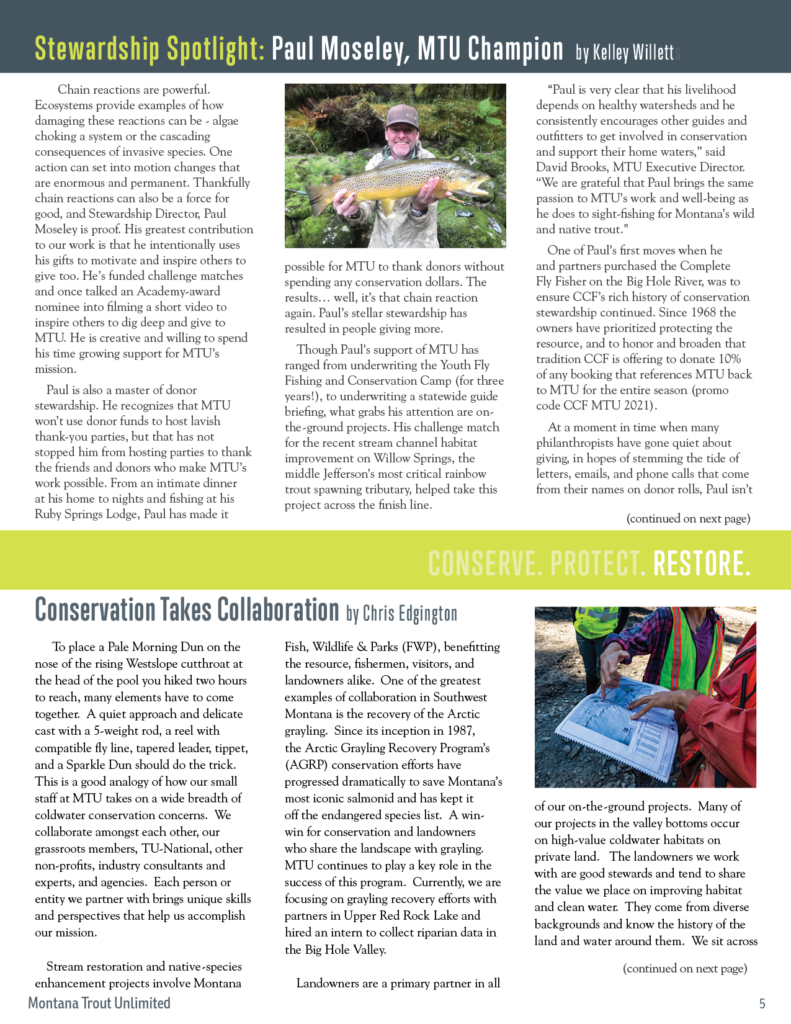
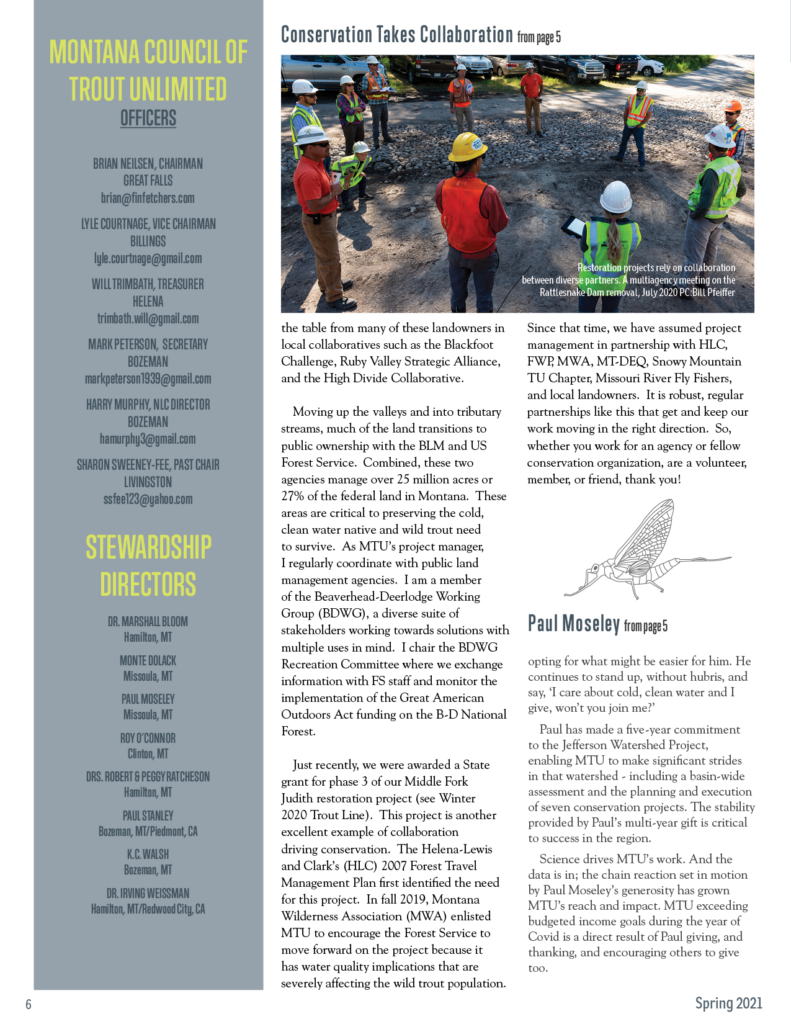
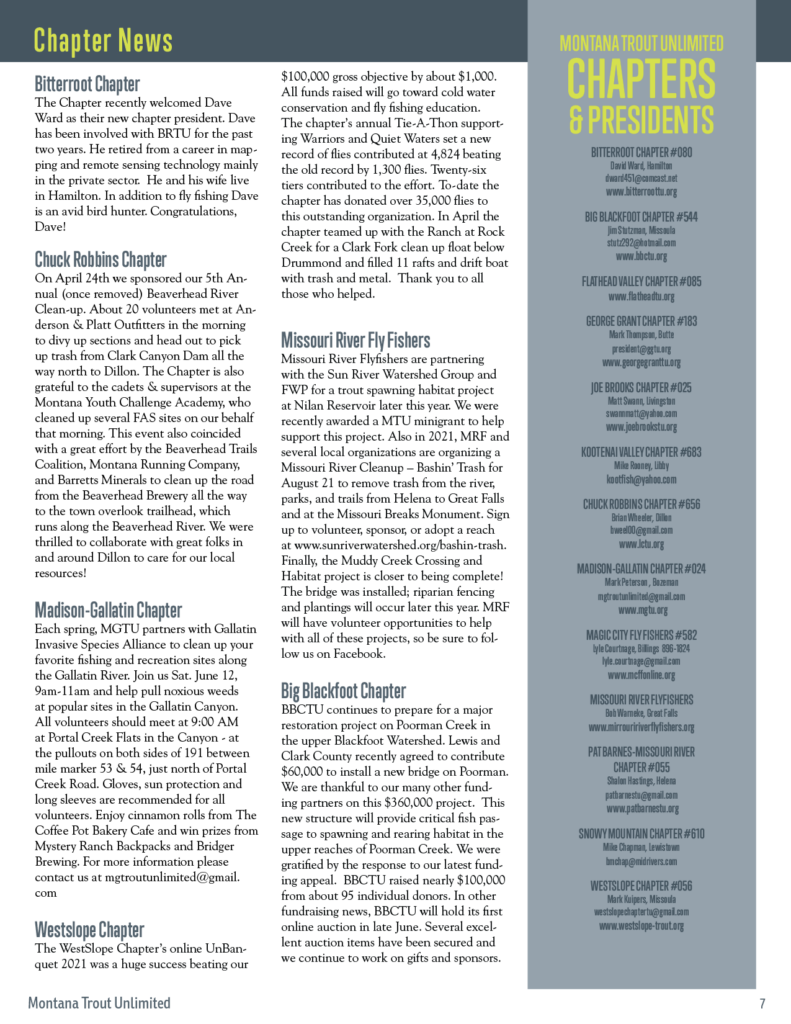


Check out the Spring 2021 issue of Trout Line, the official newsletter of the Montana Council of Trout Unlimited! Download a PDF version HERE.








This past year was a challenging one for everyone but we stayed true to our mission to conserve, protect, and restore Montana’s coldwater fisheries and their watersheds.





Our Winter 2021 is out now! This issue: Trout Need “Good Wood”, the 2021 Legislature, Jefferson restoration roundup, remembering Paul Roos, and more! Download a PDF here.
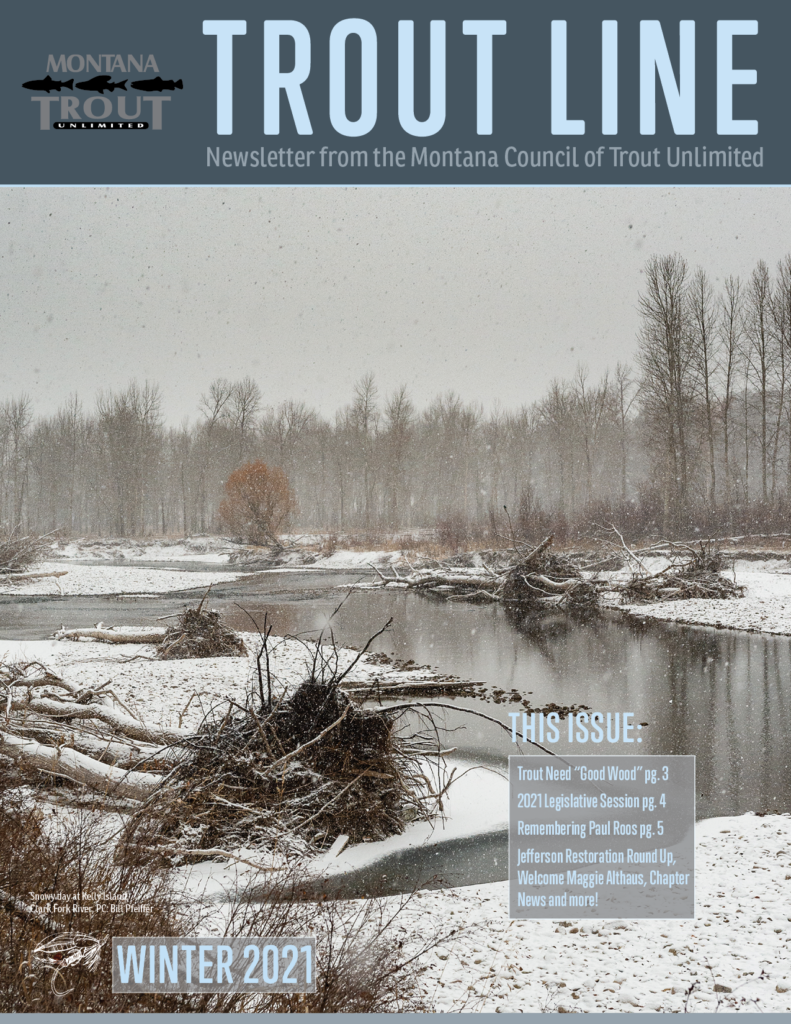
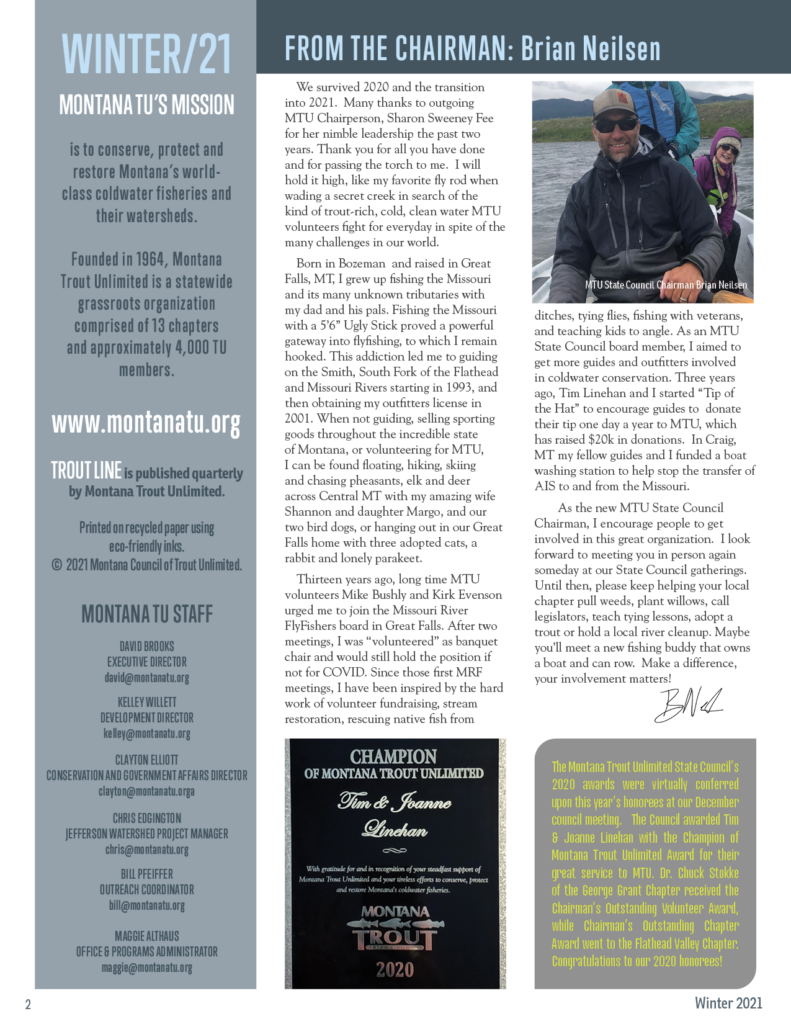
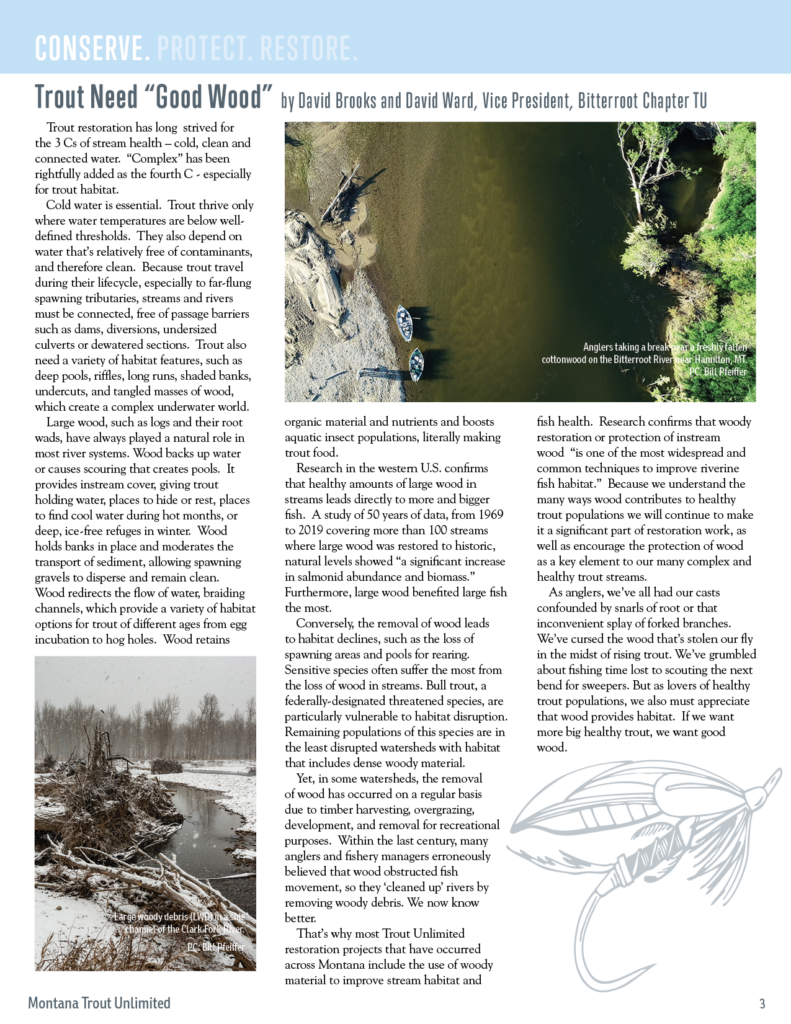
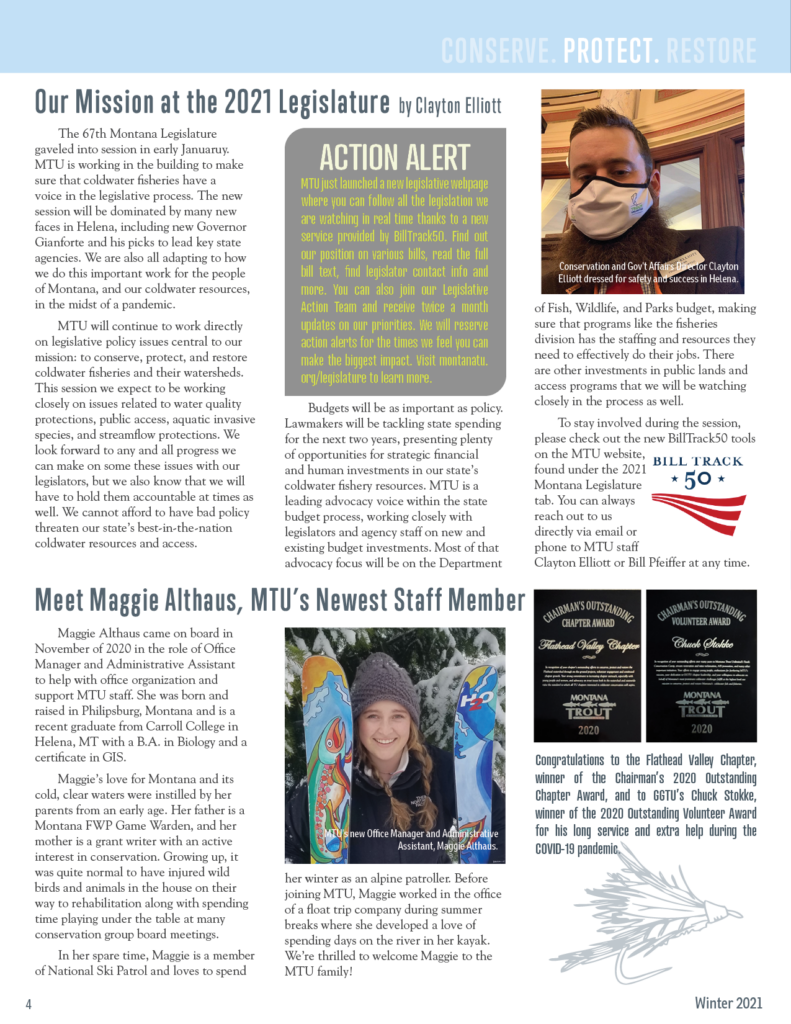
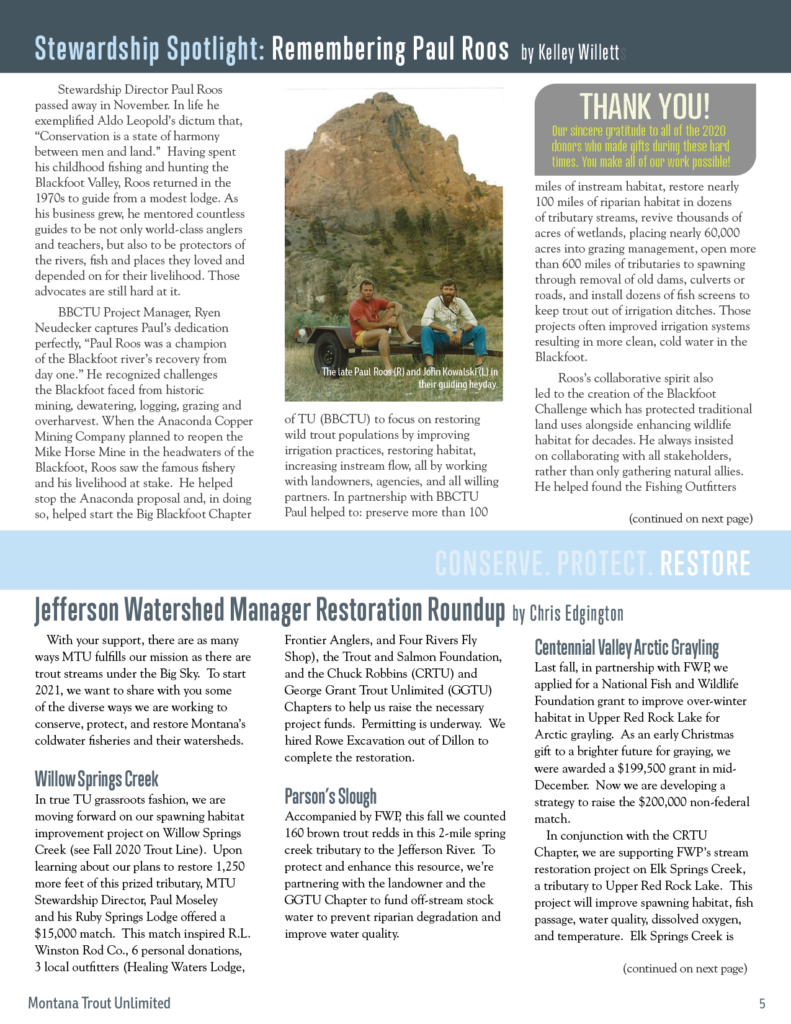
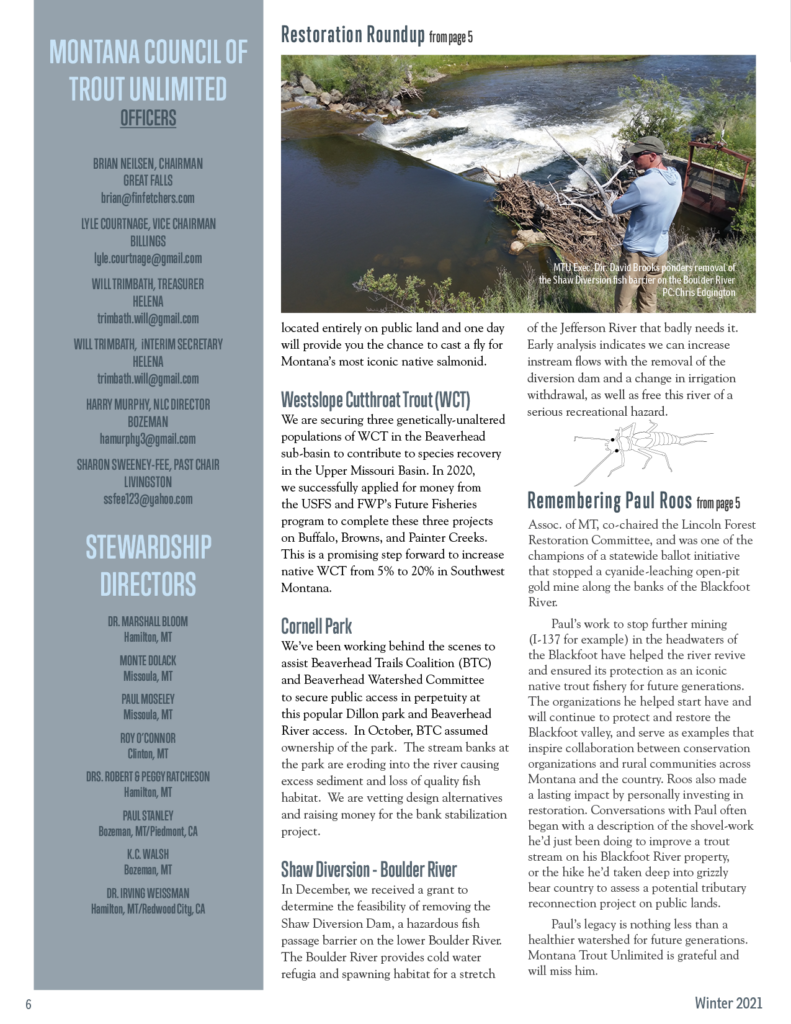
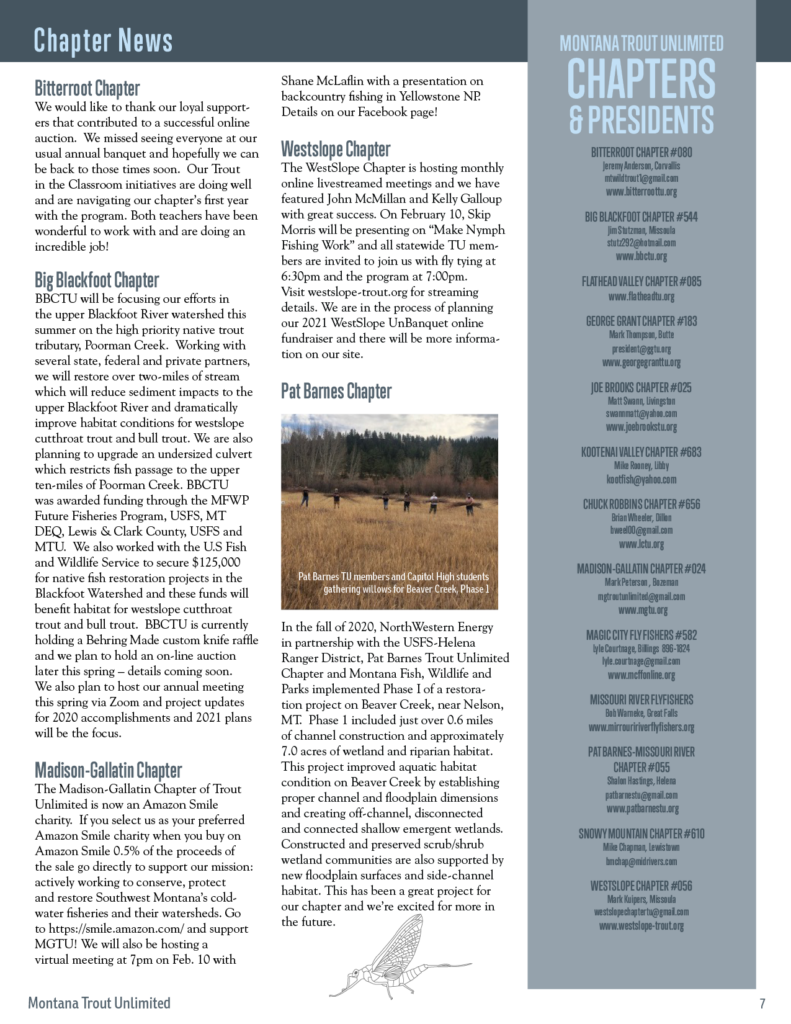

by Clayton Elliott, MTU Conservation and Gov’t Affairs Director
After years of negotiations, MTU celebrates the recent passage of the landmark Montana Water Rights Protection Act, S. 3019.

This bill finally provides Congressional ratification of the negotiated water compact and settlement between the Confederated Salish and Kootenai Tribes (CSKT), the State of Montana, and the United States. Congress noted that the $1.9 billion CSKT water compact is the largest water rights settlement in history between the federal government and a federally-recognized tribe. Foremost, the legislation finally settles on and off reservation-based water rights thereby avoiding decades of costly litigation that would create tremendous uncertainty for nearly all water users in western Montana.
As part of recognizing and ratifying CSKT’s water rights, the settlement will provide millions of dollars in renovation and restoration funds to the Flathead Indian Irrigation Project that will deliver benefits to coldwater fisheries important to Westslope cutthroat and bull trout in western Montana.
The bottom line is that this legislation is good for Montana’s coldwater fisheries and their habitat. This bipartisan agreement inks into law a robust partnership for the future cooperative management of water in Western Montana. In addition to resolving for all time the legitimate, legal, and considerable water rights claims of the Tribes, saving decades of costly litigation and uncertainty, it also will inject millions of dollars into collaborative restoration of our wild fish and their habitats while upgrading aging irrigation infrastructure critical to the Tribes and agricultural users.
Here are some more details about why the MWRPA is good for Montana and our trout populations:
We’d like to extend a special thank you to our entire congressional delegation and all our partners in this long process. Because of your efforts, we will finally have certainty in these watersheds and the cold water fisheries of Montana will be better for it, now and in the future. Happy New Year!
I was lucky enough to get the chance to fish the Kootenai River this summer with one of the people that knows the river and its fish better than just about anyone. Between reminders to “set” and “skitch” our dry flies, Tim Linehan shared with us nearly a lifetime of knowledge about a wide range of topics from hatches to patterns, as well as stories about friends and fish. While Tim’s homewaters are wonderfully remote and wild, they also face challenges. So our talk also turned to the very real and persistent threats facing the Kootenai and Lake Koocanusa from foreign mining companies in Canada. Of course, we had a banner fishing day, but it also doubled down my personal commitment to stand up for these coldwater fisheries.
For more than a decade, Montana Department of Environmental Quality (DEQ) has led an effort with partners in government, science, and communities to develop a site-specific standard for selenium pollution that flowing into Koocanusa and the Kootenai from coal mining in British Columbia. At the levels already present in this lake and river system (with more on the way from four new coal mines in the permitting process), selenium poses significant threats to aquatic life as it moves through the food web. As fish tissue concentrations of selenium rise, they can experience liver damage or failure, growth deformities, and stunted growth and fitness. Ultimately, mature female fish with toxic levels of selenium in their system experience drastically reduced production of viable eggs to the point of entire spawning seasons of fish being unsuccessful. As selenium moves through the aquatic and terrestrial food web, many other species are susceptible to a similar fate – population crash.
MTU has reviewed, participated in, and encouraged this process from the beginning with an emphasis on the goal of having DEQ set a site-specific standard for selenium in the lake and river that is based on sound science in the interest of protecting one of northwest Montana’s most valuable and intact wild and native trout fisheries. The current standards being proposed by DEQ do just that. MTU fully supports this proposed rule amendment and the site-specific selenium standard it proposes.
Unfortunately, there are a small group of special interests that are attempting to derail this important rule at the last minute. The DEQ needs to hear from Montana anglers now that our coldwater fisheries should not be the dumping ground of polluted mine waste. Despite what the opponents say, the public process to get here has been fair, open, transparent, and collaborative. This is our chance to stand up for our water and fish – please join me and add your name to our petition by clicking the picture link above.
Clayton Elliott, Conservation Director
Read our latest issue below, or download a PDF version here for your reading device.
If you’d like to receive a hard copy of our quarterly newsletter via USPS, join Trout Unlimited or renew your membership HERE. If you are a TU member living outside of Montana, you can also request a hard copy by emailing us at [email protected].
